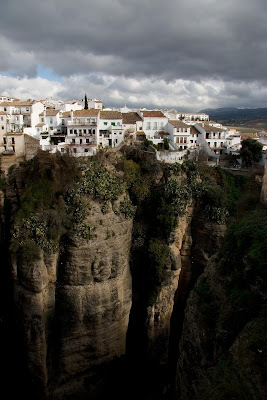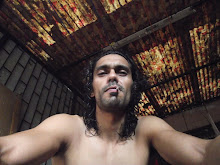 Kyaiktiyo Pagoda also known as Golden Rock) is a famous Buddhist pilgrimage site in Mon State, Burma. A small pagoda (5.5 m (18 ft)) sits on top of a golden rock, a granite boulder covered with gold leaves pasted on by devotees. The rock itself is precariously perched and seems to defy gravity as it perpetually appears to be on the verge of rolling down the hill. The rock and pagoda are at the top of Mt. Kyaiktiyo
Kyaiktiyo Pagoda also known as Golden Rock) is a famous Buddhist pilgrimage site in Mon State, Burma. A small pagoda (5.5 m (18 ft)) sits on top of a golden rock, a granite boulder covered with gold leaves pasted on by devotees. The rock itself is precariously perched and seems to defy gravity as it perpetually appears to be on the verge of rolling down the hill. The rock and pagoda are at the top of Mt. Kyaiktiyo
According to the legend associated with the pagoda, the Buddha, on one of his many visits to earth, gave a strand of his hair to Taik Tha, a hermit. The hermit, in turn, gave the strand to his adopted son King Tissa, an 11th Century Burmese king, with the dying wish that the hair be enshrined in a boulder shaped like the hermit's head. Tissa, with the help of the Thagymin, the king of the Nats found the perfect place for the pagoda at Kyaiktiyo where the strand was enshrined. It is this strand of hair that, according to the legend, prevents the rock from tumbling down the hill.
The village of Kinpun (16 km (10 mi)) at the base of Mt. Kyaiktiyo is the closest village to the pagoda. There are numerous other granite boulders on the mountain, some rocking and some not.
 Hearst Corp.'s new 46-story headquarters is a wonder of green building. The structure's grid-like frame required 20% less steel than would be used for a similar conventional perimeter frame. Sensors control lighting, dimming, or turning off interior electric lights when natural light is available. For most of the year, a state-of-the-art HVAC system uses outdoor air for cooling and ventilation. As a result, the energy used and carbon dioxide emissions are slashed to 22% less than an average office building of comparable size in New York.
Hearst Corp.'s new 46-story headquarters is a wonder of green building. The structure's grid-like frame required 20% less steel than would be used for a similar conventional perimeter frame. Sensors control lighting, dimming, or turning off interior electric lights when natural light is available. For most of the year, a state-of-the-art HVAC system uses outdoor air for cooling and ventilation. As a result, the energy used and carbon dioxide emissions are slashed to 22% less than an average office building of comparable size in New York. James Law's new cybertecture office has been commissioned in Mumbai, India, and it has already been lauded as a brand new innovation with lots and lots of promise. Which is true, it does- this building's egg shape will accommodate 13 floors of offices with an environmentally-conscious design and a technologically forward concept. There is a sky garden located at the top of the building.
James Law's new cybertecture office has been commissioned in Mumbai, India, and it has already been lauded as a brand new innovation with lots and lots of promise. Which is true, it does- this building's egg shape will accommodate 13 floors of offices with an environmentally-conscious design and a technologically forward concept. There is a sky garden located at the top of the building. Inevitably known as the Erotic Gherkin, Norman Foster's London landmark raised the bar for sustainable skyscrapers around the world. Its distinctive tapering profile is the key to its energy efficiency because it creates a pressure differential between inside and outside, driving fresh air into the building. The diagrid structure—repeated, in a different form, in Foster's Hearst Tower in New York—allows for floor-to-ceiling windows, ensuring the maximum amount of daylight. A system of atria acts as the building's "lungs," circulating fresh air drawn through the facade's double-skin. Combined, the features reduce the building's energy consumption by half, compared to a typical air conditioned office tower.
Inevitably known as the Erotic Gherkin, Norman Foster's London landmark raised the bar for sustainable skyscrapers around the world. Its distinctive tapering profile is the key to its energy efficiency because it creates a pressure differential between inside and outside, driving fresh air into the building. The diagrid structure—repeated, in a different form, in Foster's Hearst Tower in New York—allows for floor-to-ceiling windows, ensuring the maximum amount of daylight. A system of atria acts as the building's "lungs," circulating fresh air drawn through the facade's double-skin. Combined, the features reduce the building's energy consumption by half, compared to a typical air conditioned office tower. The environmentally conscious Greater London Authority (city hall) building. It uses only a quarter of the energy a normal building of its size would use.
The environmentally conscious Greater London Authority (city hall) building. It uses only a quarter of the energy a normal building of its size would use. These environmentally conscious buildings, neighborhoods, and even towns prove that going green can inspire great architecture.
These environmentally conscious buildings, neighborhoods, and even towns prove that going green can inspire great architecture.












































